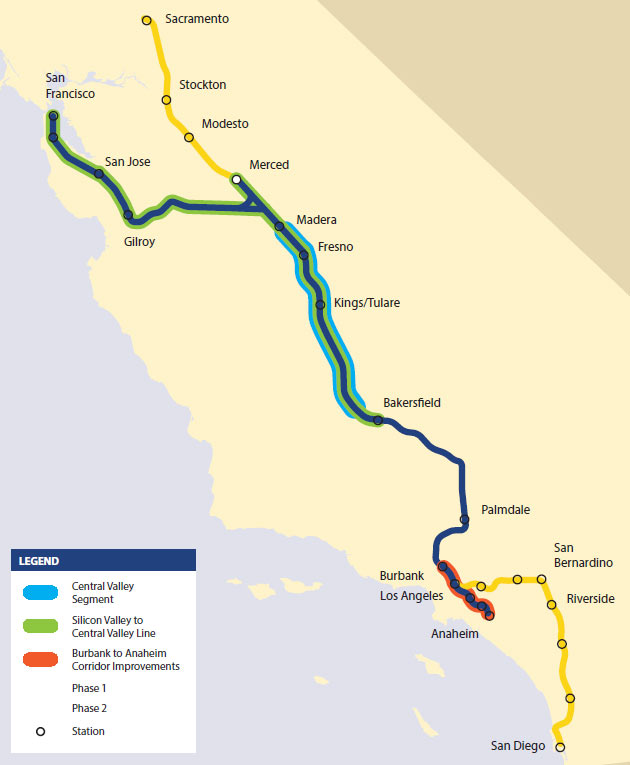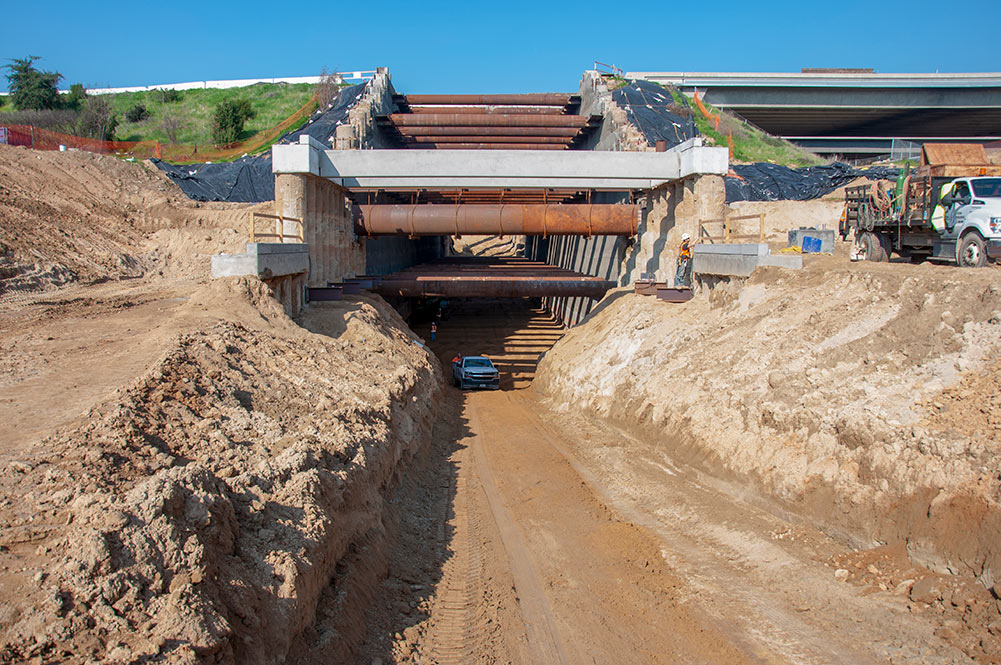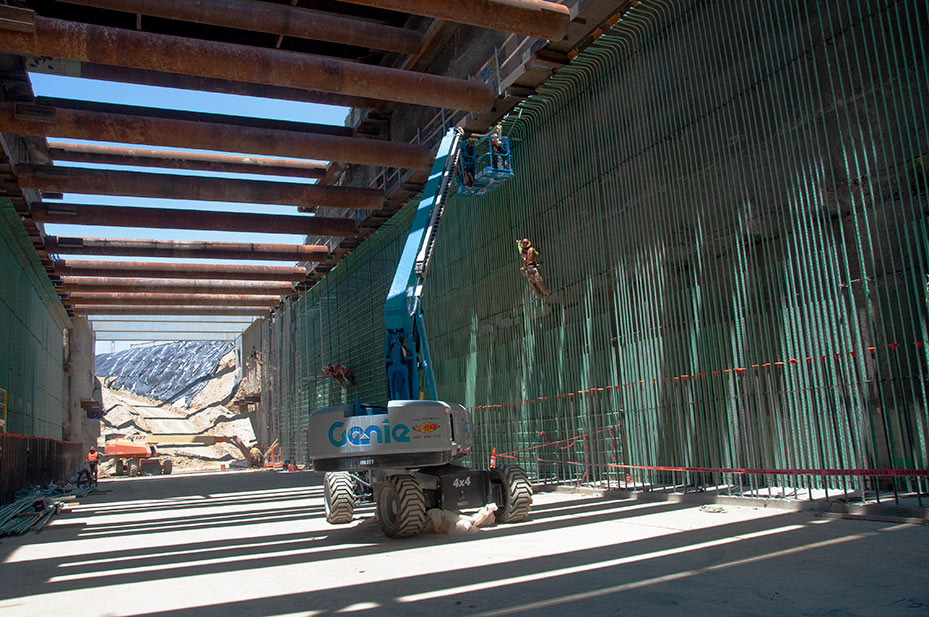California High-Speed Rail project hits the brakes 13 Jun 2019
Projected as a $77 billion high-speed rail service from Los Angeles to San Francisco, the California High-Speed Rail project has hit another barrier after recording extensive delays and rising costs.
In May this year, the administration of USA President Donald Trump terminated the $929 million grant of federal funding to the California High-Speed Rail Authority (HSRA), declaring that it had failed to make reasonable progress on the project.
In response, California filed a lawsuit in federal court, claiming the US Transportation Department lacks authority to withhold the grant. The Federal Railroad Administration (FRA) has agreed not to redirect the funds to another project while the dispute is ongoing without first initiating a formal process.
The decision follows the State of the State address by Governor of California Gavin Newsom in February this year in which he announced a substantially scaled-back plan for the rail project which focuses on finishing a smaller section of the line, leaving construction dates for the rest of the project in doubt.
“There is no doubt that our state economy and quality of life depend on improving transportation,” said Newsom, “but let us be real. The current project, as planned, would cost too much and take too long.”
Newsom however confirmed that the 119 mile (191km) section currently under construction between Merced and Bakersfield in the Central Valley will be completed.
“The Central Valley endures the worst air pollution in America and some of the longest commutes,” he continued. “They deserve better and the high-speed rail project will be part of that.”
In 2008, voters were told the project would cost $45 billion. The actual cost now appears closer to $80 billion. The US Federal Government decided that the project should begin in the Central Valley nearly a decade ago when it deemed that segment worthy of federal funding.
Independent third-party analysis by the Early Train Operator, DB Engineering and Consulting USA, confirmed the decision to focus on the Merced-Fresno-Bakersfield section first as the best option to increase passenger numbers and get an operational segment up and running.
California High Speed Rail Authority are proposing that the project proceeds in a building block approach, delivering the high-speed rail system in full as funding becomes available, while project development work also continues in other parts of the state. The authority believes that delivering this first working section will demonstrate the viability of the broader project and attract other funding to complete the line north to south.
Despite the setbacks, construction continues in the Central Valley at more than 24 active sites. The Fresno Trench, north of downtown Fresno, is the only below-grade project in Construction Package 1. The 1 mile (1.6km) trench is up to 40ft (12m) deep at its deepest and runs parallel to Union Pacific freight rail tracks. It will carry high-speed trains under State Route 180, a rail spur, and an irrigation canal and includes a barrier wall to separate high-speed and freight trains.
The base slab of the trench has been poured for the section under the highway, rail spur and canal. For the next step crews will pour the walls, while to the north crews have been preparing the walls for rebar installation.
Meanwhile, project development work includes the environmental clearance for all San Francisco to Anaheim project segments by 2022 and targeted bookend investments in the Bay Area and Los Angeles.
Recent cost estimates for the Bakersfield-Fresno-Merced section, regional bookend investments and the Phase I San Francisco to Anaheim environmental clearance stand at $20.4 billion, with the acknowledgement that costs could rise with unpredictable developments.
Managing future tunnelling challenges
The tunneling aspects of future sections of the project are among the most challenging elements of the system. There are still many unknowns associated with the engineering and environmental challenges with tunnels through the mountainous terrains from the Central Valley into San Francisco in the north and into Los Angeles in the south. To address the seismic concerns and other underground conditions, the Authority intends to create a specially selected tunnel delivery advisory panel to help identify the areas of greatest risk.
The panel will focus initially on the northern Pacheco Pass tunnels in Phase I, and consult industry tunneling experts, including contractors, TBM manufacturers, engineering firms, geotechnical engineering firms and firms specialising in tunnel construction and risk management.
The main cost categories driving the estimates for the Pacheco Pass tunnel are procuring tunnelling equipment, mining and mucking operations, pre-cast concrete lining production, and time-dependent indirect costs.
These Pacheco Pass cost estimates are reported to be in line with historic costs experienced on various rail transit and commuter rail projects in the USA. However, the Early Train Operator has recommended that the HSRA performs supplemental geotechnical investigations and that it reviews the tunnel design criteria, to potentially reduce overly conservative construction cost estimates commonly associated with the unidentified risks of underground construction.
Whether or not the ambitious tunneling sections of the project move from planning into the construction phase remains to be seen.
References
- California high speed rail designs – TunnelTalk, April 2018
- Passenger demand exists for US high speed rail – TunnelTalk, November 2015
- Governor signs California HSR funding bill – TunnelTalk, July 2012
- California HSR identifies qualified contractors – TunnelTalk, February 2012
- Peer review critical of California's HSR plan – TunnelTalk, January 2012
- California calls high-speed rail qualifiers – TunnelTalk, November 2011
- Costs balloon for California's high-speed rail – TunnelTalk, November 2011
- California calls for high-speed rail collaborators – TunnelTalk, February 2011
- California fixes high-speed rail route – TunnelTalk, July 2008
|
|
|
|
|
Add your comment
- Thank you for taking the time to share your thoughts and comments. You share in the wider tunnelling community, so please keep your comments smart and civil. Don't attack other readers personally, and keep your language professional.





